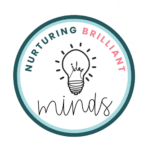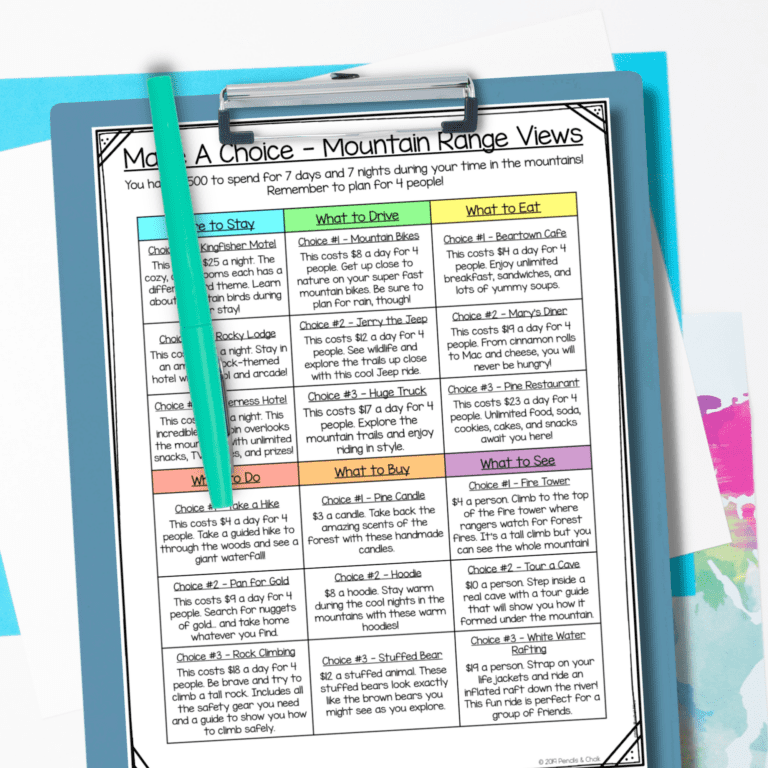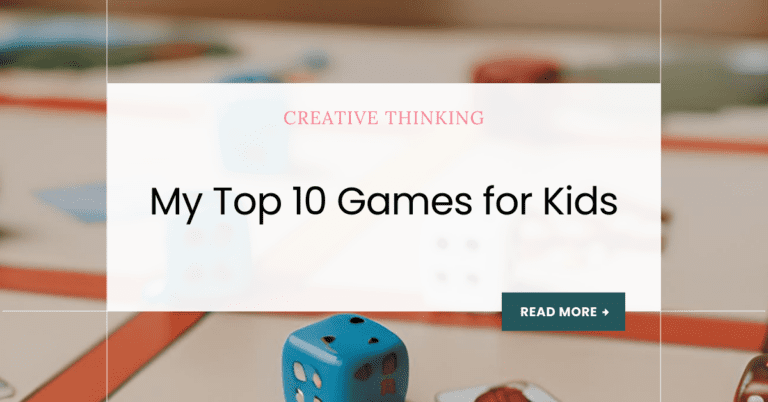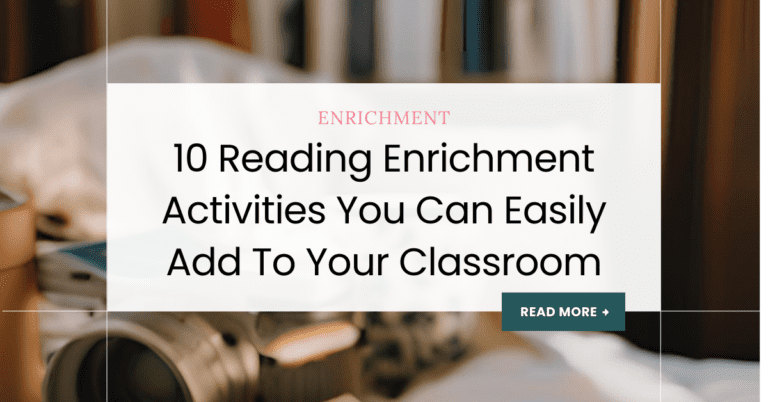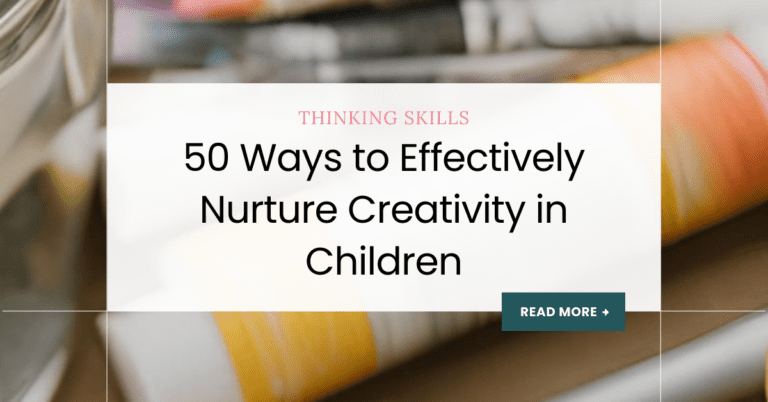Do you have students who would benefit from enrichment activities? But, have you ever asked yourself… “what are enrichment activities, anyway?”
Or, maybe you have an idea of what they could be, but feel frustrated at the lack of examples of enrichment in the classroom?
If so, you’re in the perfect place! Because the good news is that adding high-quality, challenging enrichment activities to your classroom is easier to do than you might think.
And… perhaps the best part… enrichment activities do NOT need to take a ton of time, money, or energy!
So, just what are enrichment activities? How can they help gifted students? Keep reading to get all your questions answered, along with practical ideas for how to easily add high-quality enrichment to your classroom in a way that is stress-free and easy to maintain!
Table of Contents
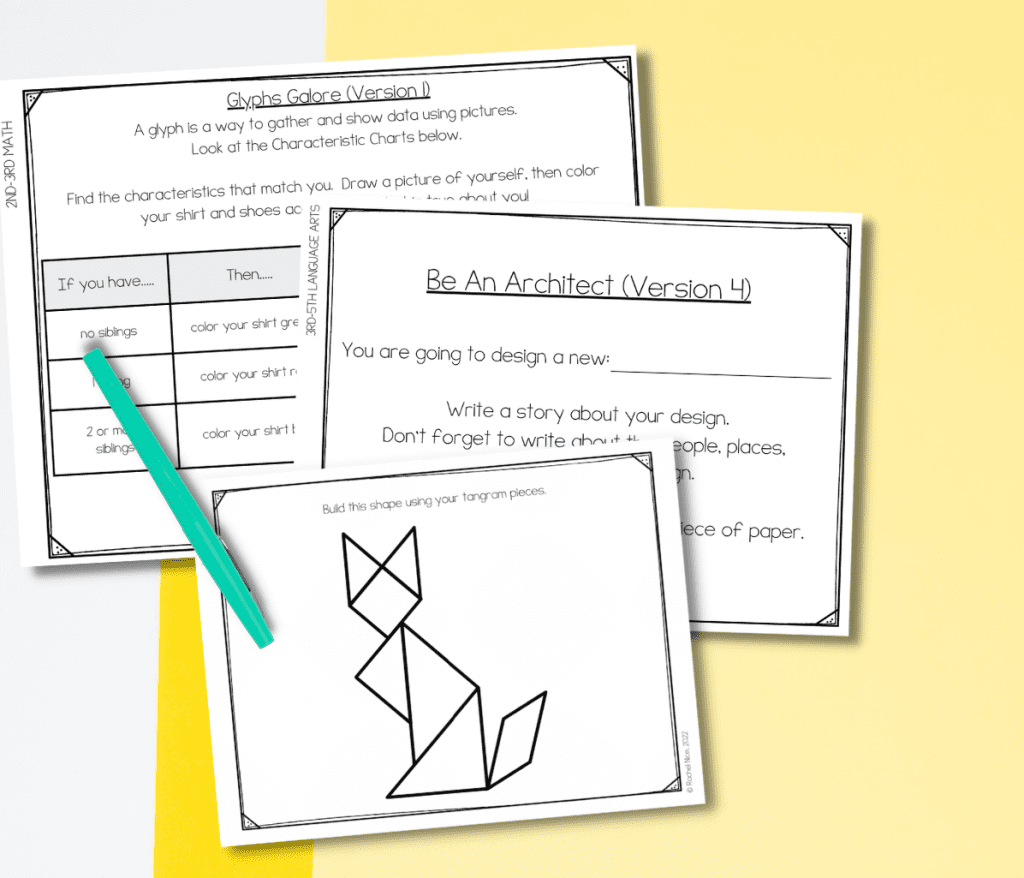
What Are Enrichment Activities?
Many activities are called “enrichment” that are just more of the same work.
A good, high-quality enrichment activity will challenge thinking skills, and engage students in meaningful problem-solving.
You do not want to give students MORE of the same material. We want to get them to go DEEPER with the same concepts.
So, high-quality enrichment activities will:
- Challenge students to produce original work
- Provide open-ended problems to solve
- Allow students to interact with grade-level material in a more complex manner
- Provide real-life opportunities to practice important life skills
- Use higher-order thinking skills than may be typical for their age or grade
- Focus on thinking skills, not just academic standards
Enrichment activities are NOT:
- More of the same work they’ve already completed
- Work they will complete at a future date (“getting ahead”)
- Worksheets with little depth
- Being assigned to help struggling students
I am a big fan of open-ended enrichment activities since they naturally allow students to use deeper thinking skills.
Open-ended work is also easily differentiated because there is no one ‘right’ answer. Students have the freedom to work at their level and pace.
Who Are Enrichment Activities for?
It’s easy to believe that enrichment activities are only for students who are top scorers. Or, only for students who tested into gifted and talented programs.
However, it’s important to remember:
- every child has strengths and weaknesses, both personally and academically
- many students who finish work quickly may not qualify for district-level enrichment or gifted support
- most students could benefit from opportunities to deepen their thinking skills
Because enrichment truly focuses on THINKING skills, enrichment can be something that is appropriate for every child, but perhaps not every child in every subject.
When To Use Enrichment Activities?
You probably have those early-finisher students that just always seem to need MORE. Or, they are showing signs that they are bored with their regular work.
This is one of the biggest challenges for teachers!
But, we don’t want students who consistently finish work quickly to feel punished by assigning them more of the same work.
If you have students who:
- consistently finish work quickly, especially in one subject
- often appear bored or are disruptive because they have nothing to do
- who seem to have an aptitude for critical thinking skills
- are identified as gifted and talented
These are markers of students who need access to high-quality enrichment activities regularly.
What Types of Enrichment Activities Do I Use?
Enrichment activities should be as simple and straightforward (for YOU) as possible.
This means you do NOT need to set up complicated stations or spend hours prepping!
These can be simple, fun activities that students work on independently when they need a bit… more.
I recommend setting up an “I’m Done, Now What” station. Keep different types of print-and-go activities constantly available so prep remains simple.
Here are some ideas.
8 Examples Of Reading Enrichment Activities
The key for reading enrichment activities is to help students engage in language arts in a novel way (no pun intended… maybe!)
The 2 activities pictured below are from my Reading Enrichment Activities Pack for K-2.
You can see that in one activity, students are given a set of letters. They must make words only using those letters, but there are no specific guidelines beyond that.
This challenges spelling skills, reading comprehension, vocabulary, and more while allowing students to use what they know in a more complex manner.
The goal is to not tell the student WHAT to do, but to leave the task open-ended so they can use the language arts skills they have in a deeper way.
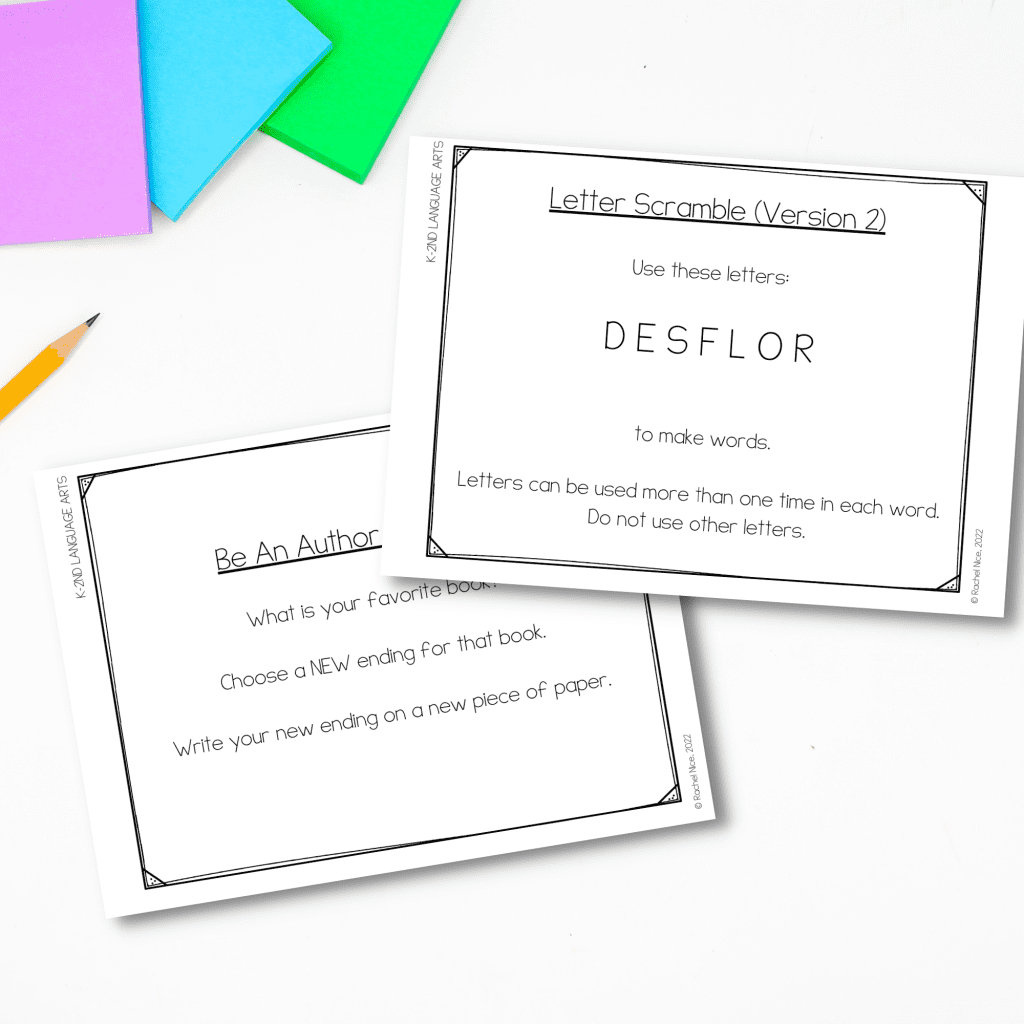
More Reading Enrichment Ideas
- Creative writing prompts
- Re-write the story prompts
- Write an alternate story ending
- Letter-based games (Scrabble, Bananagrams, etc)
- Crossword puzzles
- Wordle
7 Examples Of Math Enrichment Activities
Similar to language arts, we want to present students with a challenge and allow them to approach the task in an open-ended way.
This example from my Math Enrichment Activities for 2nd-3rd Grade Pack shows how students are given a task, but it’s still open-ended.
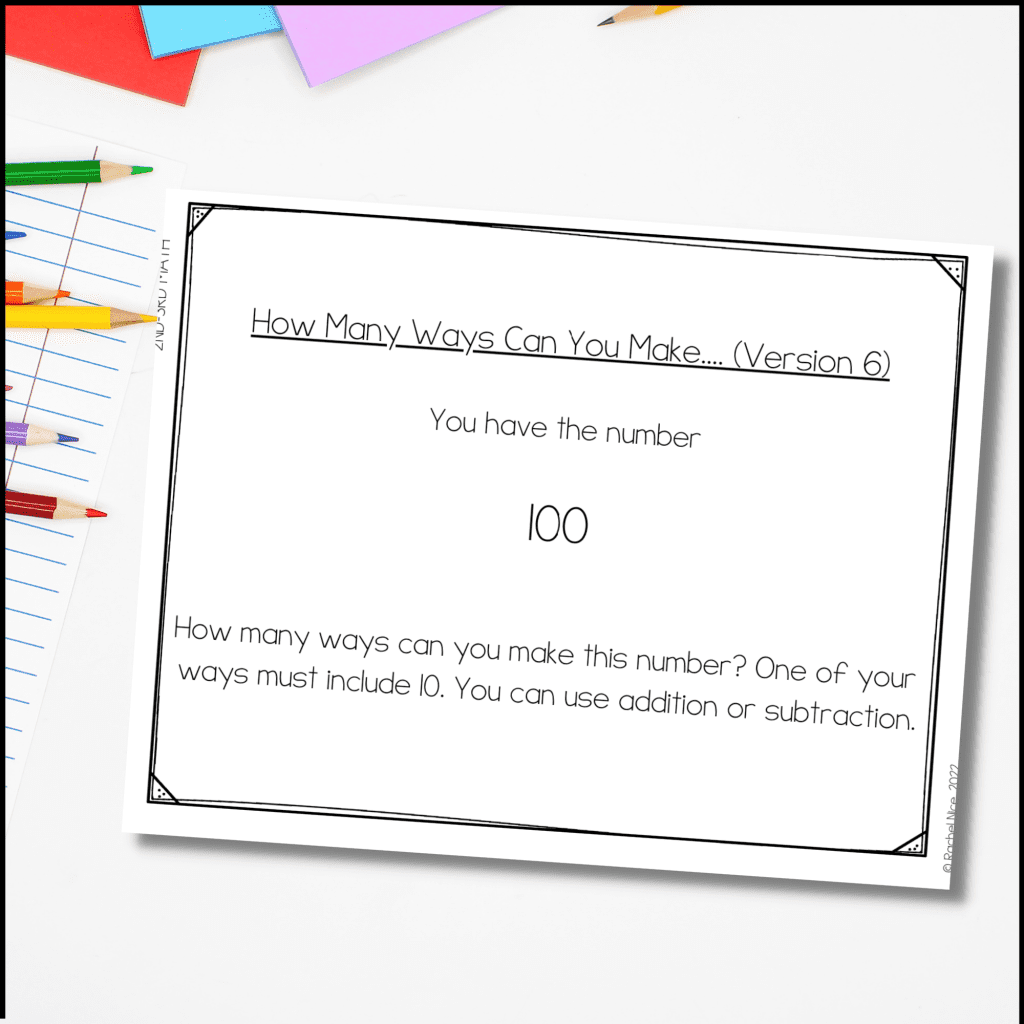
More Math Enrichment Ideas
- Tangram puzzles
- Math or strategy-based games (24, chess, decks of cards, etc)
- Logic puzzles
- Sudoku
- Write your own math problems
- Design a structure or machine based on mathematical principles
Managing Classroom Expectations For Enrichment Work
Part of creating an inclusive, differentiation-friendly classroom means setting expectations.
You need to teach your students what you expect from the enrichment activities available to them.
Ensure that your students know these three foundational rules:
- Enrichment activities help kids learn at the pace that best fits THEM.
- Enrichment work should be deeper work, not MORE work. They are not being punished NOR rewarded for being given enrichment activities.
- Enrichment work is a tool to help their brains work best.
3 Ideas For How To Start With Enrichment Activities
When I worked as a gifted education facilitator, my classroom teachers always asked me for prep-free enrichment activities that they could use with their fast finishers.
They had enough prep to do for their struggling students. Prepping materials for students who were otherwise doing fine felt overwhelming.
I told them to start small. Here are 3 ideas to get you started small, too!
- Printable puzzles
- Crosswords
- Sudoku
YES! That is ALL you need to start. These options work very well for enrichment because they challenge students and help them use deeper thinking skills.
Once you feel your students need more, you can expand your enrichment activity selection.
If you want help with this, I created prep-free enrichment activities you can print and use in your classrooms all year long.

These activities are print-and-go, making them PERFECT for your classroom centers.
They are ideal for challenging those fast finishers with deep enrichment activities that still focus on academic skills.
Teachers LOVE how easy they are to use and how much their students love them.

Want to try them out? Download the preview of the bundle here and get 5 FREE pages to try!
Hundreds of teachers have LOVED these activities! This bundle is one of the fastest-selling products in my shop!
Each grade level and subject area are available in smaller sets. You can see the entire bundle and what is included by clicking the button below.
